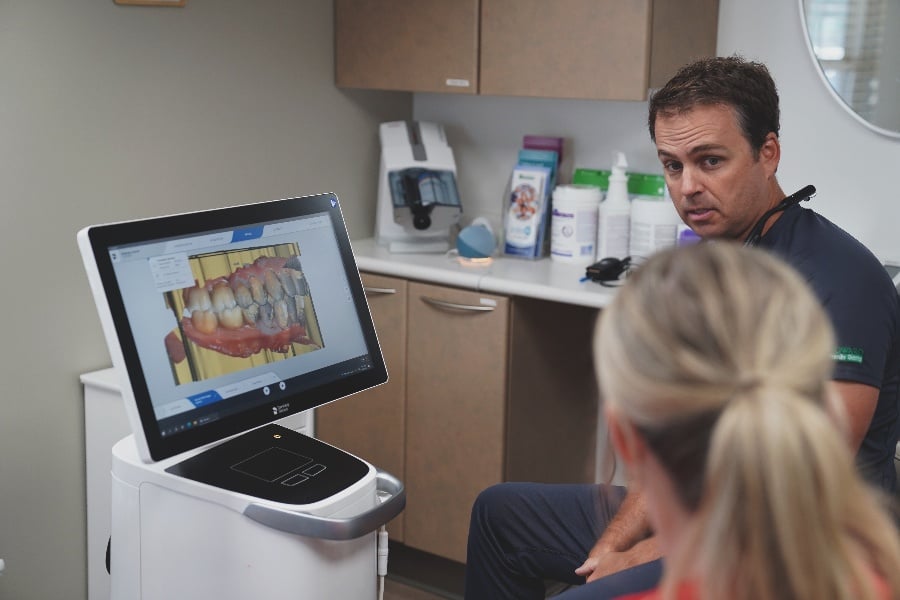How to collect the cost of dental crowns from insurance companies


At Dental ClaimSupport, we have gotten thousands of crowns paid for dentists. We utilize our process and system to get crowns paid effectively and efficiently, without waiting on insurance to respond with more requests.
In this article we’ll discuss three easy steps we utilize in our process that you can easily use in your own dental practice. These steps don’t change, regardless of which insurance company the claim is going to. By the end of this article, you will be confident with your ability to get crowns paid.
3 easy steps to get a dental crown paid
Let's dive into the steps it takes to get a dental crown paid for by insurance.
1. Take pre-operative and post-operative x-rays
You must take a pre-operative x-ray. A pre-operative x-ray will show the condition of the tooth. It’s the condition of the tooth that proves that a dental procedure is necessary.
For example, does the tooth have a crack in it or extensive decay compromising over 50% of the tooth? Each dental plan has specific criteria that must be met for benefit determination, and the vast majority of insurance companies will require a pre-operative x-ray. Taking a post-operative x-ray will help as well, but the pre-operative is most important.
A post-operative x-ray will show that the crown was seated on the tooth properly with no open margins. The post-operative x-ray will generally not affect any benefit determination but will prove quality patient care.
Some dental plans may request a post-operative x-ray in some cases, especially in the event that the patient files a grievance against the provider via their dental plan.
Therefore, it never hurts to take one.
2. The more detailed information about the necessity of the crown, the better.
Do not use a standard narrative on all patients. Every patient is different, therefore the dentist must be sure the clinical note is specific as to the patient’s condition of the tooth, requiring the crown.
Here is some information you want to always get on every patient when performing a crown.
What was the diagnosis? A “diagnosis” simply means “why did the tooth need a crown”. Any information, such as the diagnosis included in the narrative should always be reflected in the clinical note. Specificity in chart notes is key to proving dental/medical necessity, regardless of insurance benefits or not.
Is this an existing crown being replaced? If this is a crown replacing an existing crown, be sure the chart note includes the age of the crown and why the crown needs to be replaced.
What should you do if the age of the existing crown is unknown? Sometimes, the crown is so old, the patient does not know the date of exact placement. When this is the case, ask the patient to reach out to the dentist who placed the crown. If this is not an option, the patient may give you an approximate year of placement. Be sure to document “patient states the crown is approximately xx years old”.
Where do I indicate on the claim form, if this is an initial or replacement crown? Box 43 of the 2019 ADA dental claim form must be completed for all crowns or other prostheses with the date of initial placement entered in box 44, when applicable. If not, your claim is subject to automatic rejection.
Keep in mind, most dental plans will only pay for a crown replacement when the initial placement was more than 5 years ago. Some dental plans will only pay for a crown every 7 or even 10 years. This plan limitation is referred to as a replacement clause.
Make sure you know this information before the patient arrives or schedules for treatment. The replacement clause period may be obtained during the verification of benefits process.
3. Submit the claim.
Once you have your x-rays and intraoral photos, narratives, and all other pertinent information, you can submit the crown claim. All dental claims should be sent electronically through a dental clearinghouse. Clearinghouses allow you the ability to “attach” certain documentation should a claim need it. Do you need it with crown claims? Of course you do!
Also, as we all know, insurance can make things difficult and are different from their plan guidelines. For instance, some have stipulations in their plan guidelines that say crowns can be submitted on their prep dates, and some say crowns should be submitted on their seat date.
Do your best during insurance verification to find this out, as it will save you a headache in the future. Knowing when you should send certain claims and when you should receive reimbursement will only help your office with forecasting future collections.
Note: sending a claim on a prep date, when it should have been sent on the seat date, can potentially cause a reimbursement issue.
Let’s take a look at an example: A patient has a tooth prepared (prepped) for a crown on June 15, the claim is submitted reflecting June 15th as the procedure date, and the claim is paid.
However, the patient’s coverage for this existing dental plan ends on June 30th and the crown is seated on July 2nd. If the plan or PPO contract indicates benefits are considered based on the seat date then the reimbursement should not have been made.
As a dental provider, disclose the seat/delivery/completion date properly to the payer to ensure appropriate, legitimate reimbursement. This avoids any recoupment of reimbursement at a later date causing a collection challenge with the patient.
Make sure you document your crown’s seat date
Per the discussion in Step 3, it’s important to document the seat date as some insurances only want a claim submitted on the seat date. There is another reason though. Some insurances will only pay after completion of a crown, meaning it’s been seated. Make sure you document this date as it will be needed to get the crown paid.
Follow this simple three-step process and you will be well on your way to eliminating the claim denials piling up in your office!
How do I further educate myself on dental coding and billing?
We know the most common dental billing issues that plague most offices and we believe knowledge of how dental billing works can help you collect what you earned from each procedure. Our billing experts are passionate about helping you avoid the nuisances of dental insurance billing particularly when it comes to appealing denied dental claims.
We have online seminars available for those wishing to educate themselves on everything you need to know about the industry, and how to collect costs from procedures such as dental crowns.
From the basics of dental insurance, to discounts and copay forgiveness, our dental billing experts are here to increase your production, maximize your profitability, and help handle any appeals to save you headaches.
Related Posts
Dental revenue resources from Dental Claim Support


